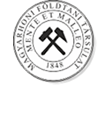- Magyar
- English
Nagy Hedvig Éva előadása LRG
ÁPRILIS 3. – From radon measurements to supervision of peaceful uses of nuclear materials
Nagy Hedvig Éva, Országos Atomenergia Hivatal felügyelőjének előadása a Litoszféra Fluidum Kutató Laboratórium szervezésében.
Időpont: 17:00 - 18:00
Helyszín: ELTE Lágymányosi Campus, Déli Tömb (1117 Budapest, Pázmány P. sétány 1/C) Sztrókay terem (00-708) és Zoom platform
Zoom, regisztráció:https://forms.gle/ZVfSgt758WU9fm6D6
Az előadás nyelve angol, az online résztvevőknek a Zoom platformon lesz meghallgatható. A szeminárium személyes és online részvétel esetén is előzetes regisztrációhoz kötött. Regisztrálni az alábbi linken lehetséges: https://forms.gle/ZVfSgt758WU9fm6D6
Kérdés, kapcsolat: gecso@staff.elte.hu
Abstract:
In 1953. President Dwight D. Eisenhower delivered his famous "Atoms for Peace" speech to the United Nations General Assembly. The speech outlined a vision for the peaceful uses of atomic energy and called for the establishment of an international organization to oversee the safe and peaceful development of nuclear energy. This organization later became the International Atomic Energy Agency (IAEA).
Last year was 50 years ago, that the Comprehensive Safeguards Agreement between the IAEA and Hungary was ratified (1972). This requires Hungary to declare all of its nuclear material and facilities to the IAEA and to allow the IAEA to verify that the declared nuclear material is used exclusively for peaceful purposes.
This is the tool to prevent the spread of nuclear weapons by ensuring that peaceful nuclear activities are not diverted towards nuclear weapons programs.
Hungary developed a national system for nuclear material accountancy based on IAEA requirements, from 2004 this system has to fulfil the requirements of the EURATOM system as well. The responsible organization for the supervision of the peaceful use of nuclear material is the Hungarian Atomic Energy Authority (HAEA) which is responsible for the nuclear safety, security and radiation protection as well.
The presentation will show the safeguards related activities of the HAEA. It covers the topics of the nuclear material accountancy, the national and international inspections of nuclear materials, the challenges around the safeguard system which the HAEA has been facing in the past 50 years, and the Hungarian Safeguards Support Programme to the IAEA - which contains instrument developments and trainings for IAEA inspectors in Hungary as well. Non-proliferation covers the Comprehensive Test Ban Treaty and the Hungarian Safeguards Culture. Last but not least I would like to try to highlight how I use(d) my background and experience from the years I spent with radon research and what kind of possibilities I have to participate in science life as a member of a regulatory body.
About the speaker:
Hedvig É. Nagy finishes her studies as an environmental scientist in 2009, and as a PhD student in 2012. She joins to the LRG in 2007 performing different radon measurements: indoor, outdoor, air, water, soil gas etc. In her MSc thesis she studied passive radon mitigation process and indoor radon concentration’s time-dependence after mitigation in her family’s house in the southern part of Hungary near to the closed uranium mine. During her PhD she did radon research in three caves, especially in the Pálvölgyi cave in Budapest. She started to work at the Hungarian Atomic Energy Authority right after her PhD studies in 2012. She works in the area of nuclear non-proliferation, worked as the leader of the section of Nuclear Safeguards and Physical Protection. She now holds the position of a safeguards inspector following her maternity leave.
About the LRG:
Since the formation of the Lithosphere Fluid Research Laboratory (LRG) in 1998, the group led by Csaba Szabó published more than 100 peer-reviewed scientific publications, 25 PhD theses and more than 50 TDK and OTDK winning student theses. In their scientific work, the students of the LRG cover broad areas of geochemistry of the lithosphere and its fluids, such as fluid and melt inclusions in various geological environments, petrology of the lower crust and the upper mantle, geological storage of CO2 and H2, the source and fate of radon, or environmental and urban geochemistry of former industrial centers. The LRG initiated this seminar series in 2019, to invite former student of the laboratory (who are now accomplished scientists) to present their research to the next generation of geochemists.

























